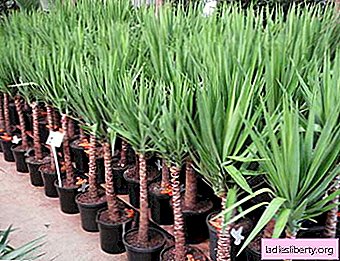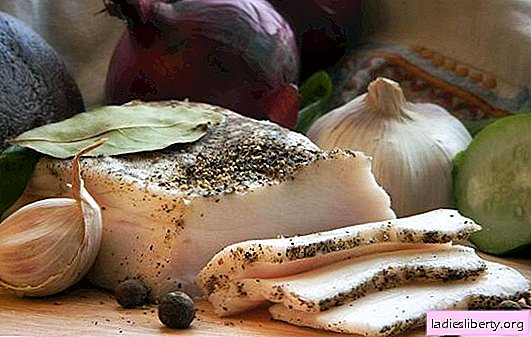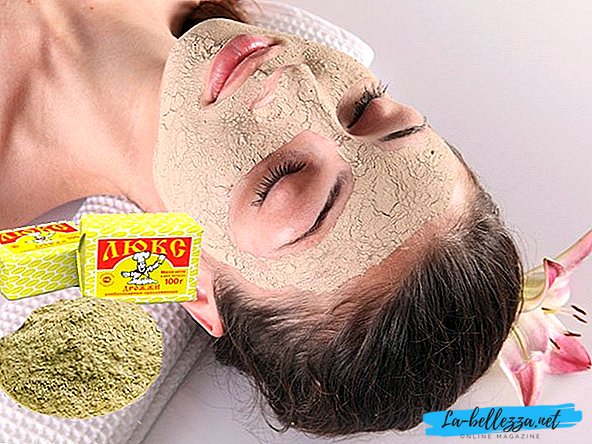
Kind Yucca (Yucca) from the agave family is represented by approximately 40 species of perennial tree plants. The birthplace of this plant is the moist forests of North America. Today, its places of growth in nature are Mexico, Jamaica, Bermuda, Central America, the southern regions of North America.
They believe that the yucca in the house is a companion of happiness, health, success in business, as well as family peace and understanding. Maybe that's why this beautiful evergreen tree is very popular among flower growers all over the world and is successfully grown in our houses and apartments. In the Caucasus and Crimea, yucca also grows in open ground, but residents of the northern and central strip can cultivate it only indoors.
Most often among the cultures of this plant cultivated in our country, one can find garden yucca, aloelistic yucca, elephant yucca and filamentous yucca. The most interesting of these is elephant yucca, reaching a height of up to 10 m. But the most common yucca is filamentous, which got its name due to the fact that its leaves are used to produce fibers. By the way, it was from such fibers that the first jeans were sewn! In a word, this is an absolutely amazing plant, the care of which consists in following some simple rules, feasible even for beginners who love exotic plants.
Yucca - growing and care
First of all, yucca is very photophilous. If there is such an opportunity, then in the summer it is best to keep the flower pot in the fresh air, at least on the balcony. In winter, he should find a place near the window, since during this period good lighting is one of the key conditions for the successful cultivation of yucca. If it cannot be provided with enough light, then the plant will not have a thick fan of leaves.
Watering a yucca from early spring to autumn should be plentiful, however, the accumulation of water in the pan can lead to rotting of the roots and the development of stem rot. In winter dormancy, watering should be moderate. The cooler the temperature of the plant in the winter, the less often it needs to be watered, however, overdrying of an earthen coma is also unacceptable.
Yucca does not need spraying, but it is necessary to wipe its leaves with a damp cloth to maintain the decorativeness of the plant and remove dust that interferes with the respiration of the plant. You should spray the yucca only when it is kept close to central heating in the winter.
In April-August, every two weeks the plant needs to be fed with complex fertilizers.
Yucca - transplant and reproduction
Yucca transplants should be done every two years in the spring. For this, a soil mixture is prepared from two parts of clay-sod land and humus, as well as peat with river sand (one part each). It is imperative to provide for good drainage. This plant needs a large pot or tub.
You can propagate a yucca in spring, by rooting the tops of the stem, or with fragments of the trunk having a length of at least 10 cm. It is also practiced by propagation using seeds or daughter sockets. Outlets, which should be cut in the spring or summer, are rooted in wet sand, and then transplanted into a pot of earth.
When propagating by seeds, it is imperative to take fresh seed material. After soaking for 24 hours in warm water, the seeds are sown in a soil mixture of peat and light leafy soil. In order to create the optimal microclimate, the container in which they are located is covered with glass. Periodically, it must be removed and aerated. If all these conditions are met, after about a month the seeds should sprout.
Yucca - Possible Diseases and Pests
Like every other plant, yucca can suffer from improper care. So, it reacts to excessively dry air, insufficient watering or drafts with the brown edges of the leaves, to too low a temperature with soft twisted leaves and brown edges.
With insufficient watering, brown spots may appear on the leaves, with an excess of sun - light brown spots.
If grayish brown spots appear on the leaves of the yucca, it means that it suffers from a fungal or bacterial disease caused by increased humidity of the air and soil. In this case, you need to remove the affected leaves and spray the plant with a systemic fungicide. Watering should also be reduced.
If there is a softening of part of the stem or crown and their decay, then most likely we are talking about such a fungal disease as rot of the stems, which most often occurs due to overmoistening of the soil. Unfortunately, most often the rot of the stems ends in the death of the plant, although if it is possible to remove all the affected tissues in the initial stage of the disease, it can be saved.
Yucca can also suffer from pests, among which the most common are false shields and spider mites. A false shield can not only cause a slowdown in yucca growth, but also lead to its death. To combat it, the plant is sprayed with a tool such as Actellik (20 drops per 1 liter of water) and the leaves are wiped on both sides with a sponge that is moistened with the same solution.
A spider mite may appear when the air is excessively dry. It becomes the cause of the death of leaves, and its presence can be guessed by their pale green color and solid whitish spots. In order to combat the spider mite, the plant is sprayed with any systemic insecticide and necessarily increase the humidity in the room.
Of course, in order to grow a solid tall plant, you need a lot of time and patience. But if you succeed, then yucca will become your pride and a real decoration of your living room or hall, so your work will be worthily rewarded!











